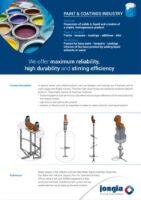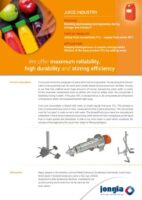
Polymer Mixing Process
The science behind polymer mixing techniques, chemistry methods, and applications
Polymer mixing is an innovative process in the production of polymeric materials. It involves the blending of two or more polymers to create a new material with improved physical and chemical properties. Polymer blending can also help to reduce material costs and improve processing efficiency. In this article, we’ll explore the world of polymer mixing, its techniques, and chemistry methods. We’ll also discuss its potential applications and the benefits it offers for industrial manufacturers.
Different polymer mixing techniques
There are several techniques for polymer mixing, ranging from simple mechanical blending to more complex chemistry-based methods. Mechanical blending involves mixing the polymers by applying shear forces, such as extrusion or mixing in a batch mixer. This method is suitable for mixing miscible polymers but is not effective for immiscible polymers. Another method that often is used are chemistry-based methods.
Chemistry-based methods of polymer mixing include compatibility by gradient copolymerization, reactive blending, and compounding. Compatibilization by gradient copolymerization involves creating a block copolymer in which the two blocks have a composition range that bridges the composition of the two polymers. Reactive blending involves adding a chemical agent that reacts with the polymer chains to create chemical bonds between the polymers. Compounding involves mixing the polymers with additives or fillers to improve their properties.
What are the chemistry methods for polymer mixing?
The chemistry methods for polymer mixing are important for achieving compatibility between different polymer blends and creating a polymer solution. One such method is the use of aminated polymers, which can react with the polymer chains to create chemical bonds. Animated polymers can also be used as a compatibilizer in immiscible polymer blends.
Another chemistry method for polymer mixing is the use of cobalt-based catalysts for polymerization. Cobalt-based Fischer-Tropsch catalysts are effective for producing polymers with a narrow molecular weight distribution, which is crucial for achieving uniform physical properties. Catalyst concentration also plays a significant role in controlling the polymer’s molecular weight distribution and properties.
Anisotropic polymer particles technology is another emerging chemistry method for polymer mixing. Anisotropic polymer particles have a unique shape that enables them to interact strongly with other polymer chains, leading to improved compatibility in blended mixtures.
Applications of polymer mixing
Polymer blending has a wide range of potential applications in various industries. One of the most significant applications is in the production of conductive polymers, which are used in electronic devices such as solar cells and LEDs. Polymer blending can also be used to produce polymer blends with improved thermal properties, making them suitable for use in high-temperature applications.
Polymer blending is also essential in the production of block copolymer membranes, which are used in the separation of gases and liquids. Polymer blending can help to achieve the desired pore size, morphology, and chemical properties in these membranes.
Another potential application of polymer blending is in the production of porous coordination polymers, which have applications in gas storage and separation, catalysis, and sensing. Polymer blending has also an critical function in the liquid polymer applications.
Liquid polymer applications and polymer mixing
Polymer blending is a critical process in liquid polymer applications, such as coatings and adhesives. Polymer mixing and extrusion technology can be used to achieve a uniform mixture of the polymers and additives, resulting in a high-quality final product.
Dispersity polymers are often used in liquid polymer applications due to their ability to create a uniform mixture with other polymers. These polymers have a narrow molecular weight distribution shape, which ensures that only a few molecular weight species are present in the final product. Also, with all these mixing types, there are some benefits for manufacturers.
What are the benefits of polymer mixing?
Polymer blending offers several benefits for industrial manufacturers. One of the most significant benefits is the ability to achieve compatibility between different polymer blends. This can lead to improved physical and chemical properties, as well as reduced material costs.
Polymer blending can also help to improve processing efficiency, as it allows manufacturers to tailor the properties of the material to suit the specific application. This can lead to reduced cycle times and improved production rates.
Pre-engineered polymer mixing systems, such as the polymer mixing eductor, offer a cost-effective and efficient solution for industrial manufacturers. These systems are designed to provide consistent and uniform mixing of polymers, reducing the need for manual mixing and improving overall production efficiency.
Additionally, polymer blending can lead to the creation of new materials with unique properties that are not achievable with a single polymer. This can open up new markets and applications for manufacturers, allowing them to diversify their product offerings and increase their revenue streams out of industrial applications.
Industrial applications of polymer mixing
Polymer blending has a wide range of industrial applications, from the production of conductive polymers to the creation of porous coordination polymers. The use of carbon of PMMA and alcohol mixtures in polymer blending has also led to the development of new materials with unique properties.
The Department of Chemistry at several universities, including Y. Wang, H. Wang, C. Wang, J. Wang, D. Wang, X. Wang, and L. Wang, have made significant contributions to the field of polymer blending, including the development of new chemistry methods and the study of phase separation in blended mixtures.
Polymer Mixing Process Summarized
Polymer mixing is a critical process in the production of polymeric materials. The use of different polymer blending techniques and chemistry methods can help manufacturers achieve compatibility between different polymer blends, improve processing efficiency, and create new materials with unique properties.
Industrial applications of polymer blending are wide-ranging and diverse, with potential applications in electronic devices, gas storage and separation, catalysis, and sensing, among others.
As the field of polymer blending continues to evolve, new chemistry methods and techniques will emerge, providing manufacturers with new opportunities to innovate and meet the changing needs of their customers. By embracing the science of polymer mixing, manufacturers can stay ahead of the curve and continue to push the boundaries of polymeric materials.
Frequently Asked Questions
What are the chemistry methods for polymer mixing?
The chemistry methods for polymer mixing focus on compatibility and create chemical bonds between polymers. Notable methods include using aminated polymers and cobalt-based catalysts. These methods improve molecular weight distribution and allow the creation of new materials with enhanced properties, making them vital in industrial applications.
What are the potential applications of polymer blending?
Polymer blending has numerous applications in various industries. It is crucial for producing conductive polymers used in electronics, enhancing thermal properties for high-temperature applications, and creating block copolymer membranes for gas and liquid separation. It also plays a significant role in porous coordination polymer production.
How does polymer blending improve efficiency in manufacturing?
Polymer blending enhances manufacturing efficiency by achieving compatibility in different polymer blends. This process allows manufacturers to optimize material properties for specific applications, reduce cycle times, and improve production rates. Improved efficiency translates to lower production costs and better resource utilization.
What are the benefits of polymer mixing for manufacturers?
Polymer mixing provides manufacturers with benefits such as cost reduction, enhanced material properties, and improved production efficiency. It enables the development of unique materials that meet specific market needs, opening new avenues and applications, thus diversifying product offerings and increasing revenue potential.
What are the industrial applications of polymer mixing?
Polymer mixing is widely applied across industries, including electronic devices, gas storage, and catalysis. It facilitates the creation of new materials with distinct properties, advancing research and development in areas like conductive polymers and porous coordination polymers. The impact is profound in both production and innovation fields.
Contact our specialized team for all your questions

Tom Pruymboom
Sales Director
Area Worldwide

Bart Brouwer
Area Sales Manager
Area Worldwide
Technical Questions?

Sijko van der Veen
Application Engineer
Technical Specialist

Sijko van der Veen
Application Engineer
Technical Specialist
Popular Posts
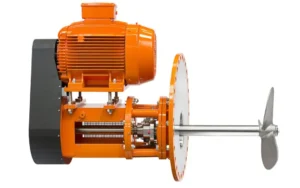
Growing demand for Jongia’s heavy duty side entry mixer RWM in the petrochemical industry
Since Jongia introduced its revamped heavy duty side entry mixer type RWM also known as the Sydmikser, it has been growing in popularity. Clients, in particular in the petrochemical industry, were quick to embrace the compactly built robust mixer. Jongia’s
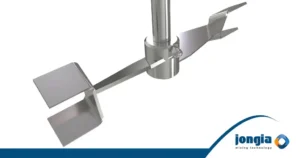
The Counterflow: the top entry mixer for the chemical industry
The Counterflow mixing element doesn’t only move the liquid in the middle or on the outside of the tank, but both sides, in opposite directions. Jongia Mixing Technology has the Counterflow in its range, mainly for the chemical industry. The
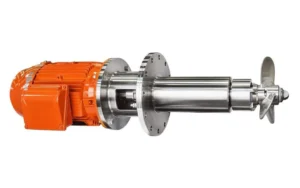
Magnetic Mixer for the Chemical industry
Jongia’s latest development is a magnet driven mixer, the Magitator, which is specially designed for chemical processes where leakage prevention and product contamination have top priority. Its unique design provides a hermetic seal so that no mechanical seal is required.




